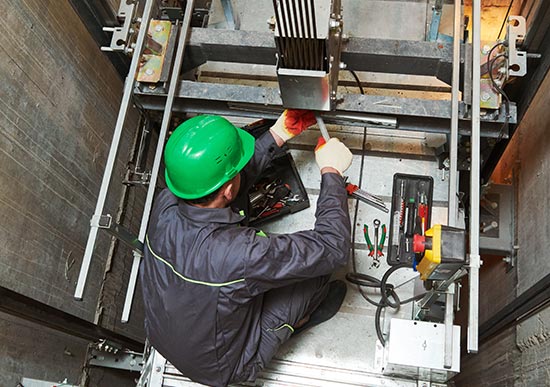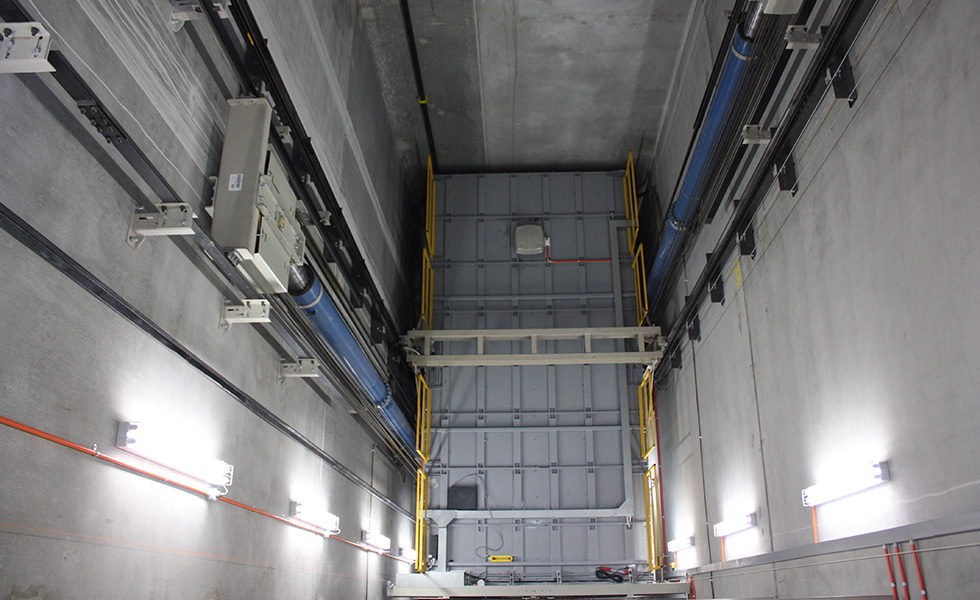Professional Lift Engineer Course: Training for Top Lift Repair Companies Near Me
Professional Lift Engineer Course: Training for Top Lift Repair Companies Near Me
Blog Article
Crucial Factors to Take Into Consideration for Lift Upkeep
When it comes to the safe and effective operation of elevators, thinking about necessary upkeep elements is paramount. It is essential for developing supervisors and maintenance personnel to stay ahead of these variables to support the lift's performance criteria and compliance demands.
Routine Evaluation Schedules

Conducting regular assessments not just enhances the total efficiency of the lift however additionally plays a crucial role in adhering to safety guidelines and industry requirements. It ensures that the lift operates smoothly, decreasing the risk of unexpected failures that might trouble residents or concession safety and security. Additionally, routine inspections add to prolonging the life-span of the lift equipment, eventually minimizing upkeep costs and downtime.
To streamline the examination process, numerous structure owners companion with certified lift upkeep companies that focus on carrying out complete assessments and providing punctual upkeep solutions. By focusing on regular inspection schedules, stakeholders can maintain the safety and security, reliability, and performance of their elevator systems.
Proper Lubrication Methods
Efficient lubrication techniques are essential for preserving the optimum efficiency and longevity of lift elements. Proper lubrication techniques play a crucial function in stopping wear and tear on relocating components, reducing friction, and making sure smooth operation of the elevator system. When it involves lift maintenance, utilizing the appropriate lubricants in the appropriate amounts at the recommended intervals is vital to decreasing and preventing costly fixings downtime.
To ensure proper lubrication, elevator technicians should follow manufacturer guidelines regarding the kind of lubricating substance to be utilized for particular parts such as bearings, equipments, and guide rails - lift maintenance company. Over-lubrication can draw in dirt and particles, resulting in component breakdowns, while under-lubrication can trigger boosted rubbing and premature wear. Frequently arranged lubrication upkeep must be consisted of in the total elevator upkeep plan to keep the system running successfully and securely
Keeping Track Of Tear and use
Proper lubrication methods are indispensable in assisting in the early detection and surveillance of damage on lift parts. Normal lubrication helps minimize rubbing in between relocating parts, preventing extreme wear and potential malfunctions. However, checking damage surpasses just lubrication. Lift upkeep employees should carry out routine examinations to determine indications of endure crucial elements such as ropes, sheaves, overview rails, and bearings. These evaluations may involve aesthetic checks, gauging wear limitations, and using analysis devices to evaluate the condition of essential parts. Furthermore, keeping in-depth upkeep records can help in tracking the wear patterns of lift parts with time, enabling predictive maintenance preparation. By very closely checking deterioration, maintenance teams can deal with problems proactively prior to they moved here escalate into pricey fixings or unanticipated downtime, making sure the efficient and secure operation of the lift system.

Safety Compliance Checks
Conducting thorough security conformity checks is necessary in ensuring the elevator system fulfills all regulatory criteria and functional requirements. These checks also involve verifying that the elevator's capability limits, rate, and emergency situation interaction systems are in line with safety standards. Additionally, adherence to safety and security conformity checks can stop crashes, reduce responsibility risks for building owners, and prolong the life-span of the elevator system.
Emergency Action Planning
Because of the critical relevance of security conformity checks in maintaining elevator systems, a robust emergency situation response planning technique is extremely important to quickly and properly address unpredicted occurrences. lift engineer great site course. Emergency situation reaction planning for lifts includes positive actions to guarantee the safety of guests and upkeep employees in the event of emergency situations such as power interruptions, entrapments, or mechanical failings
Trick parts of an effective emergency situation reaction plan include developing clear interaction protocols, supplying regular training to team on emergency situation treatments, maintaining current emergency situation contact lists, and performing routine drills to exercise action activities. Furthermore, it is important to have actually assigned personnel in charge of coordinating emergency situation reactions and guaranteeing that essential tools, such as emergency lighting and interaction devices, are in functioning order.
Conclusion
Finally, it is important to prioritize regular evaluation timetables, proper lubrication strategies, keeping an eye on damage, safety compliance checks, and emergency action planning for lift maintenance. By applying these vital variables, structure owners can guarantee the security and effectiveness of their lifts, eventually decreasing the threat of accidents and malfunctions. Regular upkeep practices are essential for look at this website lengthening the life expectancy of elevators and making certain the health of people that depend on them for transportation.
On a regular basis arranged lubrication maintenance need to be included in the overall elevator maintenance plan to maintain the system running effectively and securely.
Lift upkeep personnel need to carry out routine examinations to determine indications of wear on vital components such as ropes, sheaves, overview rails, and bearings. Additionally, keeping in-depth upkeep records can aid in tracking the wear patterns of lift parts over time, permitting for predictive maintenance planning. By closely checking wear and tear, upkeep teams can resolve concerns proactively before they escalate into pricey repair services or unexpected downtime, making certain the efficient and risk-free operation of the lift system.

Report this page